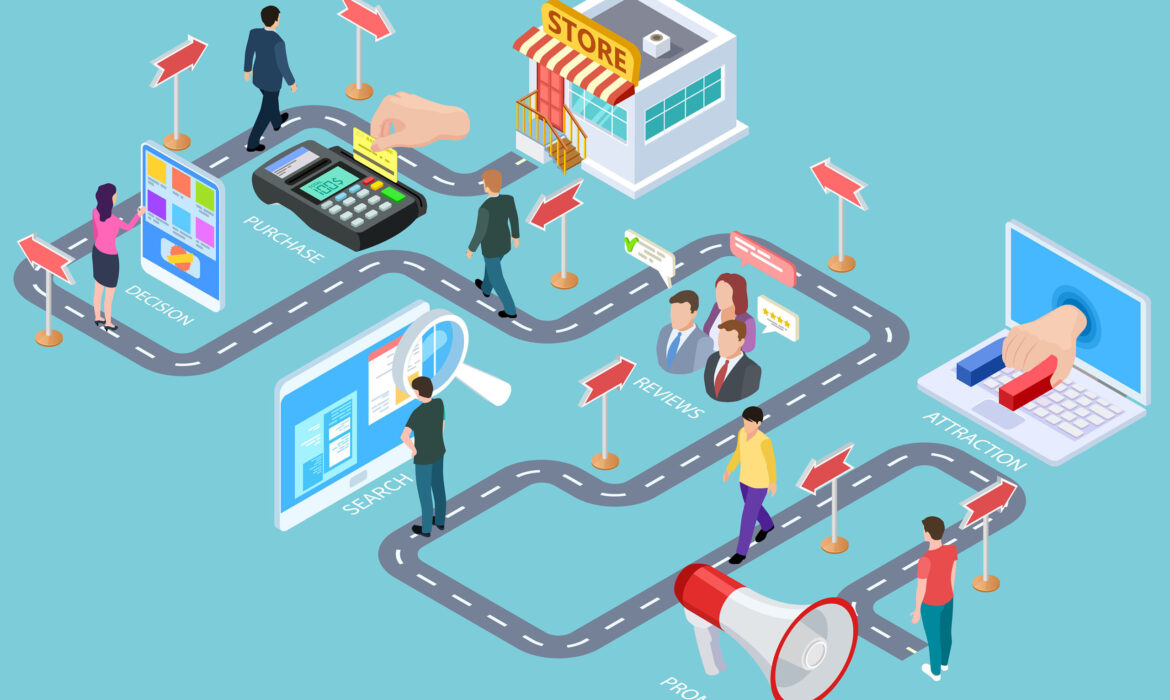Elevate Your Business: AI Implementation Consulting Services
Artificial intelligence (AI) is no longer a futuristic concept; it’s rapidly transforming business landscapes across industries. However, navigating the complexities of AI implementation can be daunting, leaving many businesses unsure where to begin. This is where consulting services for AI implementation step in, acting as a bridge between AI potential and tangible business value.
Why Choose AI Consulting Services?
Integrating AI successfully requires expertise beyond simply acquiring technology. Consulting services offer several advantages:
- Strategic Guidance: Consultants assess your needs, identify suitable AI applications, and create a tailored roadmap for achieving your business goals.
- Technical Expertise: Navigating the vast array of AI tools and platforms can be confusing. Consultants possess the technical knowledge to select the right solutions and ensure seamless integration.
- Data Management: Extracting insights from data is crucial for AI success. Consultants help you gather, clean, and prepare your data for optimal use in AI models.
- Change Management: AI adoption requires organizational adjustments. Consultants guide you through cultural shifts, employee training, and building internal capabilities.
- Risk Mitigation: Ethical considerations and potential biases are concerns. Consultants help ensure responsible AI development and address potential risks proactively.

Key Areas of Service:
AI consulting services encompass various functionalities adapted to your specific needs:
- AI Strategy Development: Define your AI goals, identify use cases, and prioritize initiatives.
- Technology Selection & Implementation: Analyze and choose the most suitable AI tools and platforms.
- Data Architecture & Management: Establish robust data infrastructures for AI-driven insights.
- Model Development & Deployment: Train and deploy custom AI models tailored to your business needs.
- Performance Monitoring & Optimization: Continuously refine and improve your AI models for optimal results.
- Governance & Ethics: Ensure responsible AI development aligned with ethical principles.
Impact on Business Functions:
AI consulting services can be applied across various business functions, unlocking significant potential:
- Marketing & Sales: Personalize customer experiences, optimize campaigns, and predict customer behavior.
- Operations & Supply Chain: Improve efficiency, optimize logistics, and predict maintenance needs.
- Product Development: Generate innovative ideas, personalize products, and predict market trends.
- Finance & Risk Management: Automate tasks, detect fraud, and make informed financial decisions.
- Customer Service: Improve response times, personalize interactions, and offer proactive support.

Choosing the Right Consultant:
With the growing demand for AI services, selecting the right consultant is crucial. Look for partners with:
- Industry Expertise: Experience in your specific industry and understanding its unique challenges.
- Technological Prowess: In-depth knowledge of various AI tools and platforms.
- Proven Track Record: A portfolio of successful AI implementations with tangible results.
- Collaborative Approach: A commitment to partnering with you and understanding your specific needs.
- Transparency & Communication: Clear communication throughout the process, ensuring you understand each step.
The Road Ahead: A Collaborative Journey
Embarking on your AI journey with experienced consulting services empowers you to harness the immense potential of this transformative technology. By working collaboratively with experts, you can unlock growth, innovation, and increased efficiency, while navigating the complexities and ensuring responsible development. Remember, AI is not just a technology; it’s a strategic investment in your future, and the right consulting partner can be your guide to success.
Empowering Content Creation: A Freelance Marketplace for AI-Enhanced Creators
The content creation landscape is undergoing a metamorphosis, driven by the burgeoning capabilities of Artificial Intelligence (AI). Today’s freelancers no longer rely solely on their innate talent; they wield powerful AI tools that enhance their efficiency, accuracy, and creative potential. Recognizing this shift, a new breed of marketplaces is emerging, specifically catering to AI-powered content creators. These platforms connect businesses with skilled writers, editors, and graphic designers who leverage AI to deliver exceptional content, faster and more efficiently.
Beyond Automation: The Symbiotic Relationship
It’s crucial to understand that AI tools are not replacing creatives, but rather amplifying their abilities. Imagine a writer using AI to research diverse writing styles, identify relevant trends, and overcome writer’s block. Or a graphic designer harnessing AI to generate design mockups, experiment with color palettes, and automate repetitive tasks. The result? Content creators become more productive, innovative, and competitive.
What makes an AI-powered content creator marketplace unique?
This new breed of marketplaces goes beyond simply listing gigs and profiles. They offer unique features that cater to the specific needs of AI-powered creatives and their clients:
- Specialized search and matching: Algorithms understand the capabilities of different AI tools and match creators to projects based on their expertise and AI proficiency.
- Project management tools: Built-in features like file sharing, communication channels, and progress tracking facilitate seamless collaboration between clients and creators.
- AI integration and support: The platform may integrate popular AI tools or offer resources to help creators select and utilize them effectively.
- Quality assurance and verification: Robust vetting processes ensure creators possess the necessary skills and demonstrate responsible AI usage.
- Data security and privacy: Strict measures are in place to protect sensitive client information and content generated with AI tools.

Benefits for Businesses:
- Access to a broader talent pool: Discover creators proficient in both traditional and AI-powered content creation techniques.
- Higher quality and efficiency: Expect faster turnaround times, improved accuracy, and content tailored to specific needs.
- Cost-effectiveness: AI often reduces content creation time, potentially leading to lower project costs.
- Innovation and competitive edge: Leverage cutting-edge AI tools to create unique and engaging content.
Benefits for Creators:
- Stand out from the crowd: Demonstrate your proficiency in AI tools and gain a competitive edge.
- Attract high-value clients: Businesses seeking AI-powered content are often willing to pay premium rates.
- Expand your skillset: Learn and implement new AI tools to become a more versatile and valuable creator.
- Increase productivity and efficiency: Reduce tedious tasks and focus on your creative strengths.
![]()
The Future of AI-powered Content Creation:
The rise of AI-powered content creator marketplaces signifies a major shift in the industry. As AI technology continues to evolve, these platforms will play a crucial role in:
- Standardizing AI usage: Establishing best practices and ethical guidelines for using AI tools responsibly.
- Democratizing access to AI: Making AI tools more accessible and affordable for creators of all levels.
- Developing new AI-powered content formats: Fostering innovation and experimentation with unique content types.
Embracing the Future: Conclusion
The future of content creation is undoubtedly fueled by AI. But it’s not about machines replacing humans; it’s about humans and machines working together, harnessing the power of AI to create exceptional content at scale. By leveraging AI-powered content creator marketplaces, both businesses and creators can unlock new opportunities, embrace innovation, and shape the future of storytelling in a meaningful way.
Innovative SaaS: AI-Powered Market Research and Competitor Analysis Platform
In today’s dynamic and competitive landscape, gaining actionable insights into your target market and understanding your competitors is crucial for business success. Traditional market research methods can be time-consuming, expensive, and limited in scope. This is where AI-powered SaaS platforms come in, offering a revolutionary approach to market research and competitor analysis.
What is an AI-Powered Market Research SaaS Platform?
Imagine a platform that combines the power of artificial intelligence with the convenience of Software as a Service (SaaS). This is what an AI-powered market research SaaS platform offers. It provides businesses with a comprehensive suite of tools and data insights, allowing them to:
- Conduct intelligent surveys and polls: Design and launch targeted surveys with AI-powered question formulation, real-time sentiment analysis, and advanced data visualization.
- Gather and analyze social media data: Track brand mentions, analyze competitor strategies, and gain insights into audience preferences and trends across social media platforms.
- Uncover hidden patterns and trends: Utilize AI algorithms to analyze vast amounts of text, audio, and visual data, revealing hidden patterns and trends that traditional methods might miss.
- Gain predictive insights: Leverage AI-powered forecasting models to anticipate future market shifts, competitor actions, and customer behavior.
- Benchmark your performance: Compare your brand’s performance against competitors and industry benchmarks, identifying areas for improvement and opportunities for growth.

Benefits of Using an AI-Powered Market Research SaaS Platform:
- Reduced costs and faster turnaround times: Automate manual tasks, analyze data efficiently, and generate reports quickly, saving time and money.
- Deeper and more accurate insights: Leverage AI’s ability to process massive datasets and uncover hidden patterns, leading to more informed decision-making.
- Competitive advantage: Gain a crucial edge by staying ahead of market trends and anticipating competitor moves.
- Scalability and flexibility: Access a wide range of tools and data sources, catering to your specific research needs and industry.
- Ease of use and accessibility: Cloud-based platforms offer user-friendly interfaces and require no technical expertise to utilize.
Key Features of a Leading AI-Powered Market Research SaaS Platform:
- Intuitive and user-friendly interface: Designed for business users, not just data scientists.
- Pre-built templates and research methodologies: Get started quickly with industry-specific solutions and best practices.
- Large and diverse data sources: Access social media data, public records, industry reports, and more.
- Advanced AI capabilities: Natural language processing, sentiment analysis, machine learning algorithms, and forecasting models.
- Collaboration and reporting tools: Share insights with your team, generate comprehensive reports, and track progress over time.
- Data security and privacy: Ensure your data is protected with robust security measures and ethical data practices.

Who Can Benefit from an AI-Powered Market Research SaaS Platform?
This technology is relevant for businesses of all sizes and industries:
- Startups: Validate ideas, identify target markets, and gain insights for rapid growth.
- Marketing teams: Understand customer preferences, optimize campaigns, and measure ROI effectively.
- Product teams: Conduct user research, track competitor features, and develop innovative products.
- Sales teams: Identify qualified leads, personalize outreach strategies, and close deals more efficiently.
- Business leaders: Gain strategic insights into market trends, make informed decisions, and drive overall business growth.
Getting Started with Your AI-Powered Market Research Journey:
- Identify your research needs and goals: What do you want to learn about your market and competitors?
- Evaluate different platforms: Compare features, pricing, and user reviews to find the best fit.
- Start with a pilot project: Choose a specific research question and test the platform’s capabilities.
- Train your team: Ensure your team understands the platform and how to interpret the data.
- Integrate insights into your decision-making: Use the data to inform your marketing, product development, and overall business strategy.
By embracing AI-powered market research SaaS platforms, businesses can gain a deeper understanding of their markets, make smarter decisions, and stay ahead of the competition in the ever-evolving business landscape. Remember, AI is not a replacement for human intelligence, but rather a powerful tool to augment your research efforts and unlock new possibilities.
Building Brand Advocacy with AI-Fueled Social Listening: Engaging with brand advocates, responding to customer feedback, and building stronger brand communities.
In today’s hyper-connected world, brands are no longer mere entities selling products; they are conversations unfolding in real-time across the vast social media landscape. Navigating this dynamic space and forging genuine connections with consumers is crucial for building brand advocacy – a loyal community that champions your brand and amplifies its message. Fortunately, AI-powered social listening tools offer a powerful solution, empowering brands to:
-
Identify and Engage Brand Advocates:
- Uncover hidden gems: Gone are the days of relying solely on follower count. AI sifts through vast amounts of social data, identifying individuals who consistently promote your brand, mention you positively, or engage in relevant conversations. These “brand advocates” are invaluable assets, often serving as organic influencers capable of reaching wider audiences with genuine enthusiasm.
- Understand their motivations: AI delves deeper than simply identifying advocates. It analyzes their content, sentiment, and online behavior to understand what resonates with them, what triggers their advocacy, and how they connect with other users. This valuable insight allows brands to tailor their engagement strategies, fostering deeper connections and encouraging continued advocacy.
-
Respond to Customer Feedback (Positive and Negative):
- Proactive brand image management: AI scans social media for mentions of your brand, including negative feedback. Real-time alerts ensure you can promptly address concerns before they escalate, demonstrating responsiveness and commitment to customer satisfaction.
- Personalized outreach: Forget generic responses. AI analyzes the sentiment and context of each individual mention, enabling personalized replies that acknowledge concerns, offer solutions, and showcase empathy. This personalized touch fosters trust and strengthens relationships with customers.
-
Foster Vibrant Brand Communities:
- Spark meaningful conversations: AI helps identify trending topics and discussions relevant to your brand or industry. Brands can strategically participate in these conversations, adding valuable insights and fostering meaningful engagement with a wider audience. This builds brand awareness and positions you as a thought leader.
- Cultivate a sense of belonging: AI can analyze the language and sentiment within your brand community, identifying topics that resonate most with members. Brands can leverage this knowledge to host discussions, create relevant content, and organize online events that cater to the community’s interests, fostering a sense of belonging and encouraging active participation.

Unlocking the Potential: Practical Applications:
The possibilities are endless:
- Airlines use AI to identify frequent flyers who praise their service and engage them in exclusive promotions or early access to new offerings, solidifying loyalty.
- Retail brands monitor social media for product feedback, identifying areas for improvement and proactively addressing customer concerns before they go viral, preserving brand reputation.
- Non-profit organizations leverage AI to identify passionate supporters, understand their motivations, and tailor engagement strategies to cultivate deeper connections and inspire continued advocacy for their cause.
Navigating the Ethical Landscape:
While AI is a powerful tool, responsible use is paramount. Be mindful of:
- Transparency: Be clear about how you use AI and the data you collect.
- Privacy: Ensure data is anonymized and used ethically, respecting user privacy.
- Authenticity: AI-powered responses should feel genuine, avoiding robotic interactions that alienate users.
The Human Touch Remains Crucial:
Remember, AI is a facilitator, not a replacement for human connection. Leverage it to identify opportunities for meaningful engagement, personalize your approach, and scale your efforts. But, it’s the authentic human touch that builds trust, fosters emotional connections, and ultimately turns brand advocates into lifelong brand loyalists.
Moving Forward:
Embrace AI-powered social listening as a transformative tool to elevate your brand advocacy efforts. By harnessing its power responsibly and ethically, you can cultivate a thriving community of passionate supporters, fostering brand loyalty and propelling your success in the ever-evolving social landscape.
AI-Powered Customer Journey Mapping: Understanding customer touchpoints, optimizing the customer journey, and creating personalized experiences at every stage.
In today’s hyper-competitive landscape, understanding your customers at every touchpoint is no longer a luxury, it’s a necessity. That’s where AI-powered customer journey mapping comes in, offering a powerful tool to not only visualize your customer’s experience but also optimize it for personalization and delight.
Unveiling the Mystery: What is AI-Powered Customer Journey Mapping?
Traditional customer journey mapping relies on surveys, interviews, and gut instinct, often resulting in incomplete and subjective data. AI takes this process to a whole new level by:
- Analyzing Massive Data Sets: From website interactions to social media mentions, AI can process vast amounts of data, uncovering hidden patterns and customer behaviors that traditional methods miss.
- Identifying Emotional Touchpoints: Sentiment analysis allows AI to understand the emotional impact of each interaction, pinpointing moments of frustration or delight.
- Predicting Customer Behavior: By analyzing past behavior and trends, AI can predict how customers might react to different stimuli, enabling proactive personalization and engagement.
Benefits Beyond Imagination: Why Choose AI for Your Customer Journey?
Imagine having a crystal ball that not only shows you your customers’ journey but also whispers their hopes, fears, and expectations at every step. That’s the power of AI-powered customer journey mapping:
- Unveiling Hidden Pain Points: Discover friction points that traditional methods might miss, leading to targeted improvements that drive satisfaction.
- Personalization at Scale: Deliver bespoke experiences tailored to individual preferences and behaviors, fostering deeper connections and loyalty.
- Proactive Customer Service: Predict potential issues and anticipate customer needs, offering timely support and exceeding expectations.
- Data-Driven Decisions: Back your gut instinct with concrete data, making informed decisions based on real-time customer insights.
- Increased ROI: Improved customer experiences translate to higher conversion rates, increased loyalty, and ultimately, boosted revenue.

Charting the Path to Success: Key Stages of AI-Powered Mapping
While the specific tools and processes might vary, the core stages of AI-powered customer journey mapping remain consistent:
- Define Your Goals: Start by clearly defining your objectives – are you looking to improve brand perception, increase sales, or reduce churn?
- Gather Data: Collect data from every relevant touchpoint, including website analytics, social media interactions, customer service logs, and surveys.
- Choose Your AI Tool: Various platforms offer AI-powered mapping functionalities, select one that aligns with your needs and budget.
- Feed the Data to the AI Engine: Let the AI crunch the numbers and weave its magic, uncovering hidden insights and patterns.
- Visualize the Journey: Create a clear and concise map showcasing key touchpoints, emotional highs and lows, and potential areas for improvement.
- Prioritize and Act: Identify the most critical areas for improvement and develop data-driven action plans to address them.
- Measure and Iterate: Monitor the impact of your changes and continuously refine your strategy based on new data and insights.
Personalization Powerhouse: Bringing It All Together
The true magic of AI-powered customer journey mapping lies in its ability to personalize experiences at every stage. Imagine:
- Recommending relevant products based on individual purchase history and online behavior.
- Tailoring website content to match a customer’s specific interests and needs.
- Offering proactive support before an issue arises, based on predicted behavior.
- Automating personalized communication based on sentiment analysis.
These are just a few examples of how AI can transform your customer journey from a generic path to a personalized haven, fostering deeper connections and driving business success.

Beyond the Hype: Real-World Examples of AI in Action
Several companies are already leveraging AI to create exceptional customer journeys:
- Netflix: Uses AI to recommend personalized shows and movies based on viewing history and preferences.
- Amazon: Offers product recommendations, anticipates purchases, and provides proactive customer service through AI-powered assistants.
- Starbucks: Leverages AI to personalize mobile app experiences, offering customized rewards and targeted promotions.
These examples showcase the tangible benefits of AI-powered customer journey mapping, paving the way for a future where customer delight becomes the norm, not the exception.
Embracing the Future: A Final Note
AI-powered customer journey mapping is no longer a futuristic fantasy, it’s a reality with the potential to revolutionize your business. By harnessing the power of data and AI, you can unlock an unprecedented level of understanding and create personalized experiences that truly resonate with your customers. So, are you ready to take the first step on this exciting journey? Start by gathering your data, exploring available tools, and preparing to be amazed by the insights you uncover. Remember, the future of customer experience is powered by AI, and the time to embrace it is now.
AI-Driven Influencer Marketing: Identifying relevant influencers, analyzing their reach and engagement, and optimizing influencer partnerships.
The world of influencer marketing is booming, with brands recognizing the power of authentic voices reaching targeted audiences. But navigating this dynamic landscape can be challenging, leaving marketers grappling with questions like: Who are the right influencers? How effective will they be? How can we optimize our campaigns? Enter the game-changer: AI-driven influencer marketing. By integrating artificial intelligence into the process, brands gain powerful tools to identify relevant influencers, analyze their reach and engagement, and ultimately, optimize their influencer partnerships for maximum impact.
Unveiling the Right Influencers:
Finding the perfect influencer match can be like searching for a needle in a haystack. Traditionally, this involved manual research, competitor analysis, and intuition, often leading to suboptimal results. AI platforms bridge this gap by:
- Leveraging advanced algorithms: These analyze vast datasets of influencer profiles, audience demographics, engagement metrics, and brand affinity to pinpoint influencers who truly resonate with your target audience and brand values.
- Going beyond vanity metrics: While follower count matters, AI delves deeper, analyzing engagement rates, sentiment analysis, and brand mentions to identify influencers who genuinely connect with their audience and drive meaningful conversations.
- Exploring micro-influencers: AI unearths hidden gems – micro-influencers with smaller, highly engaged communities, allowing for more targeted and cost-effective campaigns.
Delving Deeper: Analyzing Reach and Engagement:
Measuring an influencer’s effectiveness goes beyond a simple follower count. AI provides deeper insights by:
- Understanding audience demographics: Tools provide breakdowns of influencer audience age, location, interests, and online behavior, enabling you to assess alignment with your target market.
- Analyzing sentiment and brand mentions: AI goes beyond likes and comments, analyzing the sentiment of conversations surrounding the influencer and your brand, revealing true impact and brand perception.
- Predicting campaign performance: Advanced algorithms leverage historical data and campaign simulations to predict potential reach, engagement, and conversions, allowing for data-driven campaign optimization.
Optimizing Partnerships for Success:
AI doesn’t stop at identification and analysis; it empowers optimization:
- Dynamic contract generation: AI platforms suggest fair compensation based on influencer metrics, campaign goals, and industry standards, streamlining negotiations and ensuring mutually beneficial partnerships.
- Real-time campaign monitoring: Track campaign performance in real-time, measuring key metrics and identifying areas for improvement, allowing for agile adjustments and maximizing ROI.
- Content optimization suggestions: AI analyzes successful influencer content, suggesting topics, hashtags, and formats to resonate best with the target audience, ensuring content aligns with campaign goals.

The Human Touch: AI as a Partner, Not a Replacement:
It’s important to remember that AI is a powerful tool, but not a replacement for human judgment and creativity. The most successful influencer marketing campaigns blend the analytical power of AI with the strategic vision and human touch of experienced marketers.
By leveraging AI strategically, brands can:
- Save time and resources: Automate tedious tasks like influencer discovery and data analysis, freeing up valuable time for strategic planning and creative development.
- Scale campaigns efficiently: Identify large pools of relevant influencers and manage numerous partnerships seamlessly.
- Gain data-driven insights: Make informed decisions based on objective data rather than intuition, maximizing campaign effectiveness.
Demystifying the Future: Where AI is Taking Influencer Marketing:
The future of AI-driven influencer marketing is bright and full of possibilities:
- Personalized influencer recommendations: AI will personalize influencer suggestions based on your brand’s unique voice, target audience, and campaign goals.
- Micro-moment targeting: AI will identify influencers who resonate with audiences at specific moments in their purchase journey, creating highly targeted and impactful campaigns.
- Automated campaign management: AI will automate campaign setup, influencer outreach, content creation, and performance tracking, streamlining the entire process.
As AI continues to evolve, so will its role in influencer marketing. By embracing this powerful tool responsibly and strategically, brands can unlock the true potential of influencer partnerships and forge meaningful connections with their target audiences, driving engagement, brand awareness, and ultimately, success.
AI-Generated Sales Scripts: Personalized Pitches & Objection Handling
In the fast-paced world of sales, every interaction counts. Crafting personalized, compelling pitches and addressing customer objections effectively can be the difference between securing a deal and walking away empty-handed. Enter AI-generated sales scripts, a revolutionary tool that promises to equip you with the perfect words for every situation.
Decoding the Hype: What are AI-Generated Sales Scripts?
These scripts leverage machine learning algorithms to analyze vast amounts of sales data, including successful pitches, common objections, and customer demographics. Armed with this knowledge, the AI generates personalized scripts tailored to your specific product, target audience, and individual customer interactions. It’s like having a real-time sales coach whispering the perfect lines in your ear.
Beyond Buzzwords: The Benefits of AI Scripts
- Personalization Power: Imagine delivering a pitch that feels like it was crafted just for the customer, addressing their specific needs and pain points. AI scripts capture customer demographics, buying history, and online behavior, allowing for unparalleled personalization.
- Data-Driven Confidence: Say goodbye to scripted speeches that sound robotic and inauthentic. AI scripts learn from real-world successes, incorporating high-performing language patterns and persuasive tactics into your dialogue, boosting your confidence and effectiveness.
- Objection Anticipation: Anticipating and addressing customer objections is crucial for closing deals. AI scripts analyze countless past interactions to identify frequently raised concerns and suggest impactful counter-arguments, empowering you to navigate objections smoothly.
- Time-Saving Efficiency: Drafting personalized scripts for each prospect can be time-consuming. AI scripts automate this process, freeing up your time to focus on building relationships and closing deals.

Scripting Success: Implementing AI in Your Sales Strategy
Before diving headfirst, remember that AI scripts are tools, not replacements for your sales skills. Here’s how to integrate them effectively:
- Start Small: Don’t overwhelm yourself. Begin with one product or campaign and test the waters.
- Customize and Adapt: Don’t rely solely on the script. Use it as a guide, personalize it with your own style and insights, and be prepared to adapt to the conversation’s flow.
- Focus on Value, Not Automation: Remember, customers connect with humans, not robots. Use AI scripts to enhance your value proposition, not replace genuine dialogue.
- Measure and Improve: Track the impact of AI scripts on your sales performance. Analyze successes and areas for improvement, continually feeding data back to the AI to refine its suggestions.
The Ethical Consideration: Are AI Scripts a Threat to Human Salespeople?
AI won’t replace salespeople – it will augment them. By automating repetitive tasks and providing data-driven insights, AI scripts empower salespeople to focus on what they do best: building relationships, understanding customer needs, and delivering personalized solutions. It’s a partnership, not a competition.
The Final Pitch: Embrace the AI Advantage
The world of sales is constantly evolving. AI-generated sales scripts offer a powerful tool to personalize your approach, adapt to customer needs, and close deals more effectively. Embrace this technology, not as a replacement, but as a valuable asset in your sales arsenal. Remember, the future of sales isn’t scripted; it’s a collaborative dance between human intuition and AI-powered insights. So, step onto the dance floor, leverage the power of AI, and watch your sales success soar.
The Future of Work: AI, Freelancing, and the Gig Economy
The landscape of work is undergoing a seismic shift. Artificial intelligence (AI) is rapidly automating tasks, freelancing and the gig economy are on the rise, and the traditional 9-to-5 job model is being challenged. This confluence of forces raises intriguing questions: how will AI impact freelance work, create new gig opportunities, and ultimately reshape the future of work?
AI: Friend or Foe for Freelancers?
While some perceive AI as a job-stealing threat, for freelancers, it has the potential to be a powerful ally. Here’s how:
- Increased demand for specialized skills: As AI automates routine tasks, the demand for human expertise in areas like creativity, critical thinking, and emotional intelligence will rise. Freelancers with these skills will be in high demand to complement and oversee AI-driven processes.
- Enhanced productivity and efficiency: AI tools can assist freelancers in various tasks, from data analysis and content creation to marketing and project management. This frees up time for them to focus on their core strengths and take on more clients.
- Improved client matching and project discovery: AI-powered platforms can match freelancers with relevant projects based on their skills and experience, leading to better job fit and increased earning potential.
However, challenges exist:
- Competition from AI-powered solutions: In specific niches, AI itself could become a competitor, offering automated services that undercut human freelancer rates.
- Need for continuous upskilling: To stay relevant, freelancers will need to invest in constantly learning new skills and adapting to evolving technologies.
- Potential bias in AI algorithms: Algorithmic bias could disadvantage certain groups of freelancers, requiring ethical AI development and fair platform practices.

New Gig Opportunities Emerge:
Beyond freelance work, AI is giving rise to entirely new gig opportunities:
- AI training and development: As AI adoption grows, there will be a need for human experts to train and develop new AI models, creating gigs for data scientists, programmers, and domain specialists.
- AI explainability and ethics: Ensuring transparency and addressing ethical concerns in AI will require human oversight and analysis, opening doors for ethicists, social scientists, and communication specialists to work on a gig basis.
- Human-in-the-loop tasks: Many AI systems require human intervention for specific tasks, like quality control or decision-making in sensitive situations, creating micro-gigs for humans to collaborate with AI.
Reshaping the Future of Work:
The combined impact of AI, freelancing, and the gig economy will likely lead to a more flexible and diversified work landscape:
- Hybrid work models: Traditional full-time jobs might become less common, replaced by a combination of freelance work, gig opportunities, and flexible employment arrangements.
- Focus on lifelong learning: Adaptability and the ability to learn new skills will be essential for workers to thrive in a rapidly changing environment.
- Rise of the “portfolio career”: Individuals may have multiple income streams, juggling different projects and clients, creating a more personalized and customized work experience.
![]()
Navigating the New World:
As individuals and societies adapt to this evolving landscape, here are some key considerations:
- Investing in education and training: Upgrading skills and staying abreast of technological advancements will be crucial for career success.
- Building a strong personal brand: Standing out in a competitive gig economy requires cultivating a strong online presence and showcasing your unique skills and expertise.
- Advocating for worker protections: Policies and regulations need to adapt to ensure fair treatment and social safety nets for workers in the gig economy.
Conclusion:
The future of work is uncertain, but the interplay between AI, freelancing, and the gig economy offers exciting possibilities. By embracing lifelong learning, adaptability, and proactive engagement, individuals can become active participants in shaping a future of work that benefits everyone. Remember, AI is not here to replace us, but to augment our capabilities and create new opportunities. Let’s embrace this change and work together to ensure it leads to a more diverse, flexible, and rewarding future for all.
AI-Powered Affiliate Marketing: Using AI to identify profitable niches, generate targeted content, and optimize ad campaigns for affiliate programs.
The world of affiliate marketing is fiercely competitive, demanding agility and constant innovation. Many marketers are turning to a powerful ally: Artificial Intelligence (AI) to stay ahead of the curve. By leveraging AI’s analytical prowess and creative spark, you can unlock profitable niches, craft laser-focused content, and optimize your campaigns for maximum impact. Buckle up, because we’re about to explore the exciting world of AI-powered affiliate marketing!
Discovering Hidden Gems: Niche Identification with AI
The first step to success is finding a profitable niche. But manually sifting through endless data can be overwhelming. Here’s where AI shines:
- Trend analysis: AI tools can analyze social media buzz, search trends, and competitor activity to identify emerging niches with high potential. Imagine uncovering a rising interest in sustainable home goods before the market explodes.
- Market segmentation: AI can slice and dice vast datasets, pinpointing sub-niches within your chosen area. This allows you to hyper-target your audience, increasing conversion rates.
- Competitor insights: AI tools can analyze competitors’ content, affiliate programs, and marketing strategies, revealing their strengths and weaknesses. Learn from their successes and avoid their pitfalls.

Content that Converts: AI-Driven Content Creation
Once you’ve identified your niche, captivating content is crucial. AI can streamline and enhance your content creation process:
- Topic generation: Feeling stuck for ideas? AI can suggest compelling blog post topics, product reviews, and social media captions based on your niche and target audience.
- Personalized content: AI can personalize content based on user data, tailoring offers and recommendations to individual preferences. This boosts engagement and conversions.
- Content optimization: AI can analyze your existing content and suggest improvements for SEO, readability, and user engagement. Ensure your content ranks higher and resonates with your audience.
Optimizing for Success: AI-Powered Campaign Management
The final frontier is campaign optimization. AI can help you squeeze every drop of performance out of your efforts:
- A/B testing: AI can automate A/B testing of different ad variations, headlines, and landing pages, identifying the best performers in real-time. This allows you to optimize your campaigns quickly and efficiently.
- Bid and budget management: AI can analyze auction dynamics and competitor bids, automatically adjusting your bids and budgets for maximum reach and ROI. Say goodbye to guesswork and hello to smarter spending.
- Fraud detection: AI can detect and prevent fraudulent clicks and conversions, protecting your hard-earned revenue. Focus on legitimate traffic and maximize your profitability.

The Human-AI Partnership: A Symbiotic Force
It’s crucial to remember that AI is not a magic bullet. It’s a powerful tool that complements, not replaces, human expertise. Your creativity, strategic thinking, and understanding of your audience remain essential. Use AI to automate tasks, gain insights, and augment your own strengths. Think of it as a highly skilled assistant, working tirelessly to support your vision.
Embracing the Future: Getting Started with AI-Powered Affiliate Marketing
Ready to harness the power of AI? Here are some steps to get you started:
- Identify your goals and resources: What are you hoping to achieve? How much can you invest in AI tools and platforms?
- Explore different AI tools: From niche identification to content creation, numerous AI tools cater to specific needs.
- Start small and experiment: Don’t try to do everything at once. Choose one area to pilot, learn from the results, and then expand your use of AI.
- Focus on ethical practices: Ensure the AI tools you use are transparent, unbiased, and respect user privacy.
The future of affiliate marketing is undoubtedly AI-powered. By embracing this technology responsibly and strategically, you can unlock hidden opportunities, create content that resonates, and optimize your campaigns for maximum impact. So, join the robot revolution and watch your affiliate marketing efforts soar!
Building a High-Performing SaaS Team: Hiring and Managing Talent for Success
In today’s competitive SaaS landscape, attracting and retaining top talent is crucial for sustainable growth. Building a high-performing team requires a strategic approach to both hiring and managing, focusing not just on technical skills but also on cultural fit, motivation, and continuous learning. This guide equips you with the knowledge and strategies to build a dream team that propels your SaaS company to success.
Hiring the Right People: Beyond Skills, Seek Passion and Alignment
- Define Your Ideal Candidate: Start by outlining the specific skills, experience, and personality traits needed for each role. Consider factors like technical expertise, communication abilities, problem-solving skills, and cultural fit with your existing team.
- Prioritize Cultural Fit: Technical skills are crucial, but don’t underestimate the importance of culture. Look for individuals who align with your company’s values, mission, and work style. Assessing cultural fit through behavioral questions and team interactions helps ensure long-term success.
- Go Beyond Traditional Resumes: Utilize diverse sourcing channels like online communities, hackathons, and employee referrals to reach hidden talent pools. Look for individuals with a passion for your product, a track record of continuous learning, and a drive to succeed in a fast-paced environment.
- Design a Rigorous Interview Process: Implement a multi-stage interview process involving technical assessments, behavioral questions, and team interactions. This provides a holistic understanding of the candidate’s skills, experience, and cultural fit.
- Offer Competitive Compensation and Benefits: Recognize the value of top talent by offering competitive salaries, benefits packages, and equity options. Show your commitment to employee growth and well-being to attract and retain the best.
Managing for Success: Cultivating a Thriving Team Culture
- Foster Continuous Learning: Provide opportunities for ongoing professional development through training programs, conferences, and access to industry resources. Encourage your team to stay ahead of the curve and embrace new technologies.
- Implement Clear Goals and Expectations: Set clear, measurable goals for individuals and teams, ensuring alignment with company objectives. This creates a sense of purpose and motivates employees to strive for excellence.
- Encourage Open Communication and Collaboration: Foster a culture of open communication and collaboration by providing platforms for feedback, knowledge sharing, and cross-functional teamwork. This empowers employees, promotes innovation, and strengthens team bonds.
- Recognize and Reward Achievements: Celebrate individual and team successes publicly. Implement a system of recognition and rewards that acknowledges outstanding contributions and motivates continued high performance.
- Prioritize Employee Well-being: Invest in employee well-being by offering flexible work arrangements, health and wellness programs, and opportunities for work-life balance. This fosters a positive and supportive work environment, leading to increased employee satisfaction and retention.
- Embrace Data-Driven Decision Making: Utilize data and analytics to track team performance, identify areas for improvement, and measure the effectiveness of your management strategies. Data-driven insights inform continuous improvement and ensure your team evolves to meet changing needs.
Building a High-Performing SaaS Team: A Journey, not a Destination
Building a high-performing SaaS team is a continuous journey, requiring constant adaptation and improvement. By focusing on hiring the right people, fostering a thriving culture, and implementing effective management strategies, you can empower your team to achieve remarkable things and drive your SaaS company towards sustained success. Remember, your team is your greatest asset, and investing in their growth and well-being is the foundation for a bright future.












